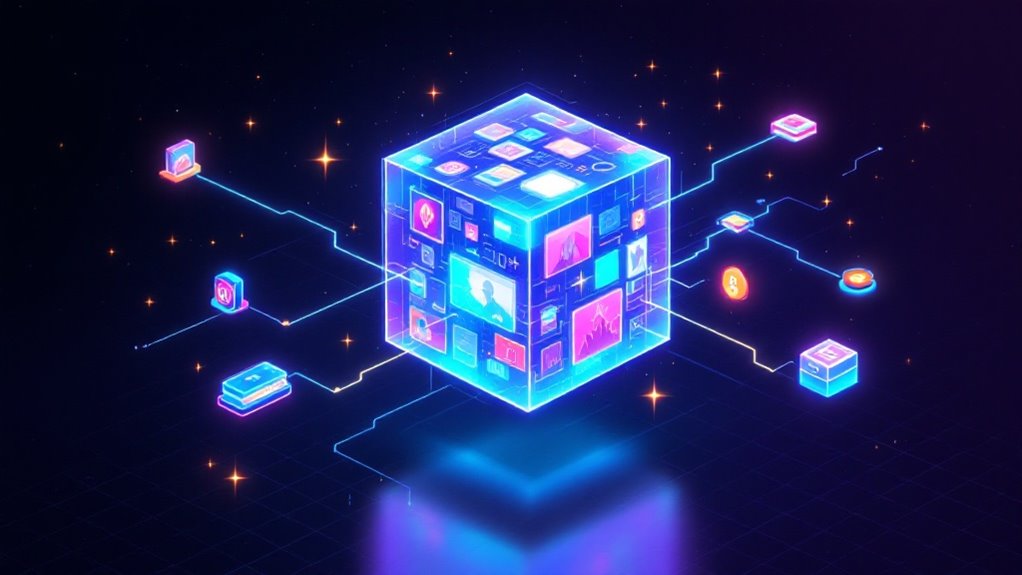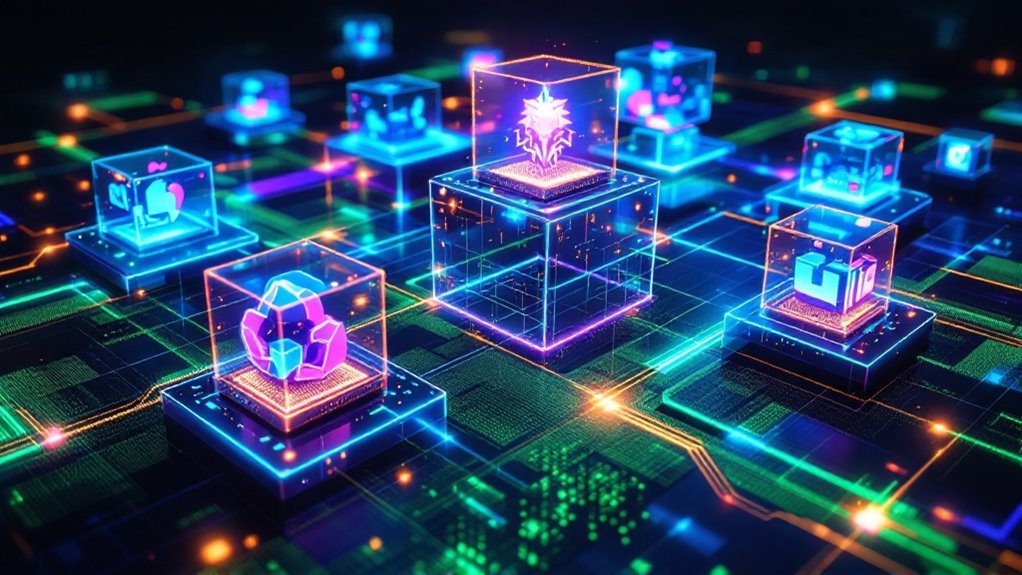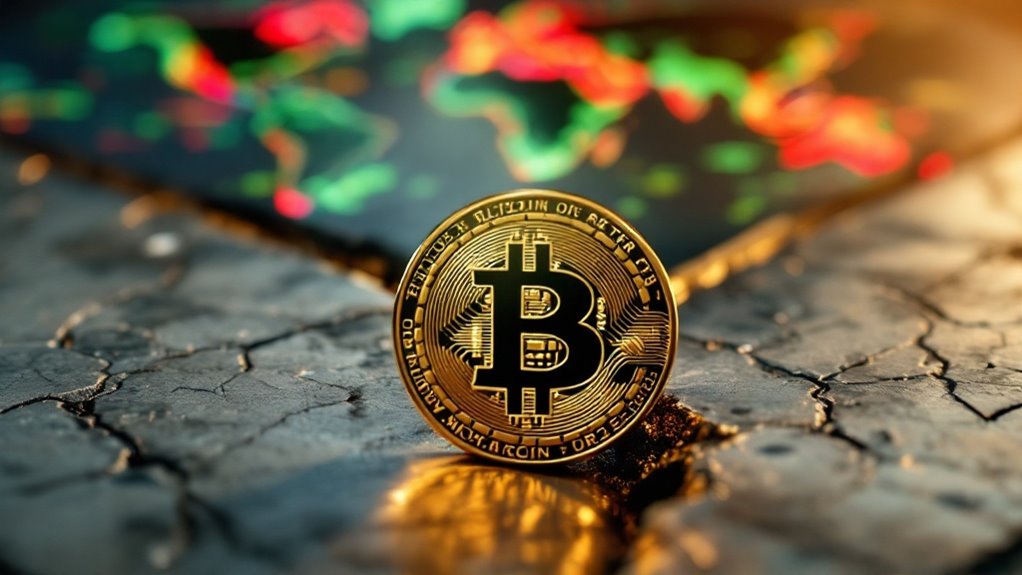NFT marketplaces function as digital bazaars where collectors and creators trade unique digital assets secured by blockchain technology. These virtual town squares buzz with activity as users buy, sell, and mint everything from digital art to virtual real estate through automated smart contracts. Popular platforms like OpenSea and NBA Top Shot serve specific communities, each carving out their niche in this rapidly evolving ecosystem. The future of digital ownership unfolds with each passing transaction, revealing new possibilities for those ready to explore.

Nearly every week, a new NFT marketplace emerges in the digital landscape, promising collectors and creators fresh ways to trade unique digital assets. These digital bazaars hum with activity as millions of pixels transform into prized possessions, each secured by blockchain technology that acts like an unbreakable digital fingerprint. From the bustling streets of OpenSea, where digital art mingles with virtual real estate, to the refined galleries of SuperRare, where artists showcase their masterpieces, these platforms have revolutionized how we perceive and trade digital ownership. These marketplaces require users to create user accounts for secure transactions and asset management.
Behind the glossy interfaces lies a sophisticated technological orchestra. Smart contracts automate transactions while digital wallets stand guard like vigilant sentinels, protecting users' precious assets. The marketplaces themselves are built on robust blockchain networks, with Ethereum leading the charge despite its occasional traffic jams and eye-watering gas fees. Like a well-oiled machine, these platforms integrate decentralized file storage systems to guarantee that digital treasures remain safe and accessible. Users can easily set up their profiles with digital wallet downloads to begin their NFT trading journey.
Like a digital symphony, NFT marketplaces harmonize smart contracts, wallets, and blockchain technology to orchestrate seamless trading of virtual treasures.
The ecosystem has grown beyond simple buying and selling. Today's NFT marketplaces are vibrant communities where creators mint their digital dreams into reality, collectors bid on tomorrow's masterpieces, and traders surf the waves of virtual value. Some platforms specialize in specific niches – NBA Top Shot captures iconic basketball moments, while Axie Infinity creates a universe where digital pets become valuable assets. Each token's non-fungible properties make it uniquely identifiable and impossible to replicate within the marketplace.
These marketplaces generate revenue through various streams, taking their slice of the digital pie through transaction fees and premium services. The global NFT market has expanded dramatically, reaching a staggering $67 billion valuation by 2025. Yet, like any frontier territory, challenges loom on the horizon. Environmental concerns cast long shadows over energy-hungry blockchain networks, while regulatory uncertainties keep lawyers burning midnight oil.
Despite these hurdles, NFT marketplaces continue to evolve, adapting to user needs and technological advances. They stand as digital town squares where tradition meets innovation, where a JPEG can be worth millions, and where the definition of ownership is being rewritten one block at a time.
In this brave new world, these platforms aren't just marketplaces – they're the architects of tomorrow's digital economy.
Frequently Asked Questions
Can NFT Marketplaces Be Hacked and What Happens to Stolen NFTS?
Yes, NFT marketplaces face various security vulnerabilities leading to hacks. Stolen NFTs are typically resold quickly at low prices, laundered through crypto mixers, or frozen by marketplaces, with recovery rarely possible.
What Payment Methods Are Typically Accepted on NFT Marketplace Platforms?
NFT marketplaces primarily accept cryptocurrency payments, especially Ethereum. Many platforms now support credit/debit cards, fiat currencies, and digital payment methods like PayPal to accommodate a broader user base.
How Long Does It Take to Create and List an NFT?
Creating an NFT typically takes between 30 minutes to several weeks, depending on artwork complexity. The listing process usually requires 1-3 days, including marketplace approval and blockchain transaction confirmation.
Are There Age Restrictions for Buying and Selling on NFT Marketplaces?
Most NFT marketplaces require users to be 18 or older to buy and sell. Some platforms allow minors with parental supervision, but age verification is typically part of the registration process for legal compliance.
What Happens if the NFT Marketplace Platform Permanently Shuts Down?
If a marketplace shuts down, NFTs remain secure on the blockchain. However, owners may lose access to metadata and images unless stored decentrally. Alternative platforms can still display and trade these digital assets.









